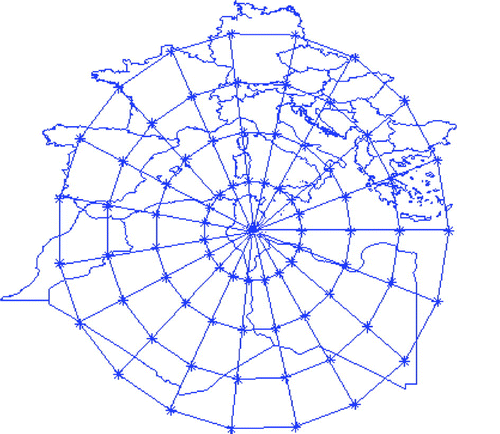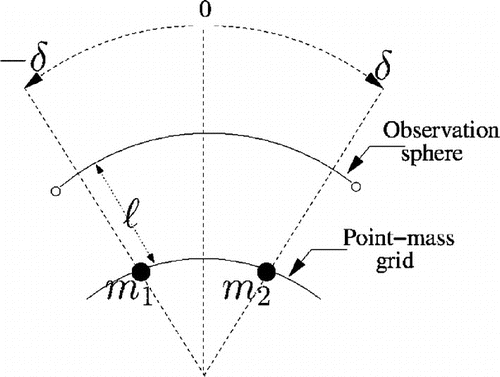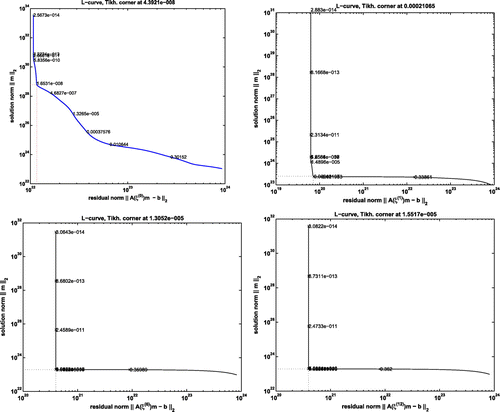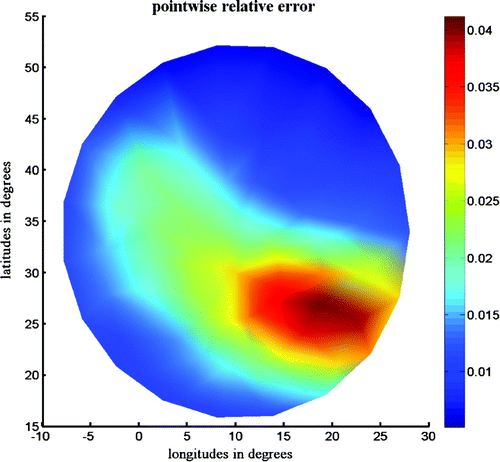Figures & data
Figure 2. Plots of the potential on the observation sphere as function of the distance between the point masses. The coordinates are given by
where
.
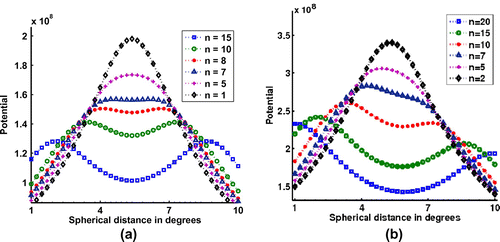
Figure 3. Gaussian curvature of the potential as function of the spherical distance between the point masses. (a) corresponds to the case of equal masses. (b) represents the case of two different masses.
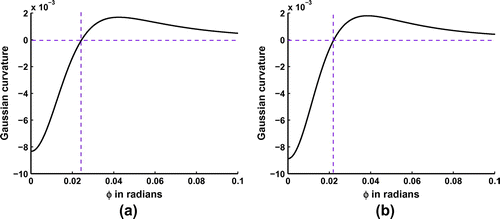
Figure 4. A schematic of both cases studied in Section 4.2. In (a), we show the principal retrieved point-mass and the masses identified when adding noise. In (b), we show the second experiment dealing with identifying two point masses
, and we see the masses identified around the principal masses. The difference between the found point masses sizes is shown in both cases.
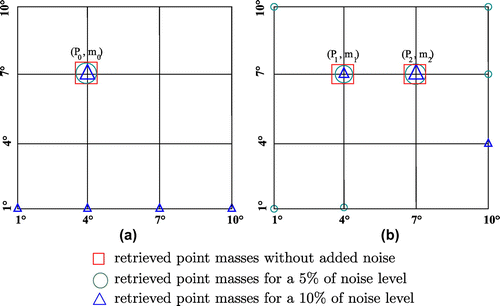
Table 1. Influence of the level of the added noise on the retrieved mass values. In the second and the third columns we give the ratios of the retrieved principal masses and the initial masses.
Figure 5. The geographic region under study (circle) which is a spherical cap centred at the point with longitude W and latitude
N.
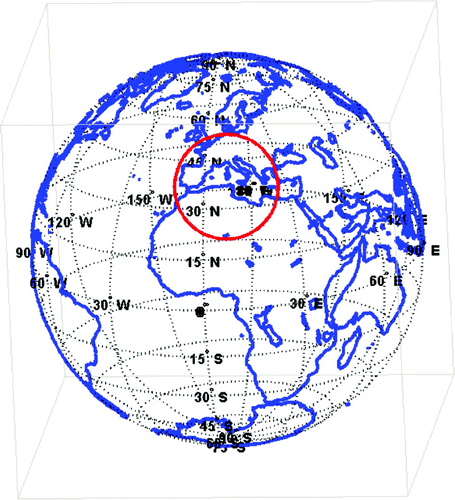
Figure 6. Slepian functions for the spherical cap with and with bandlimit
. The first two rows show the Slepian functions corresponding to the first six largest eigenvalues. The last row shows those Slepian functions which correspond to very small eigenvalues.
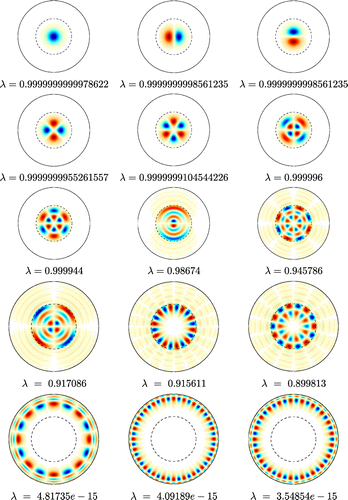
Figure 7. Spectrum of the spatio-spectral concentration problem on the spherical cap with (domain under study) and bandwidth
. On the
-axis, we show the rank of the eigenvalues and on the
-axis their magnitudes.

Figure 8. The grid that we use in the computations consists of a web of points regularly spaced in both the radial and tangential directions. The minimal distances between the points of this grid respect the stability condition.
